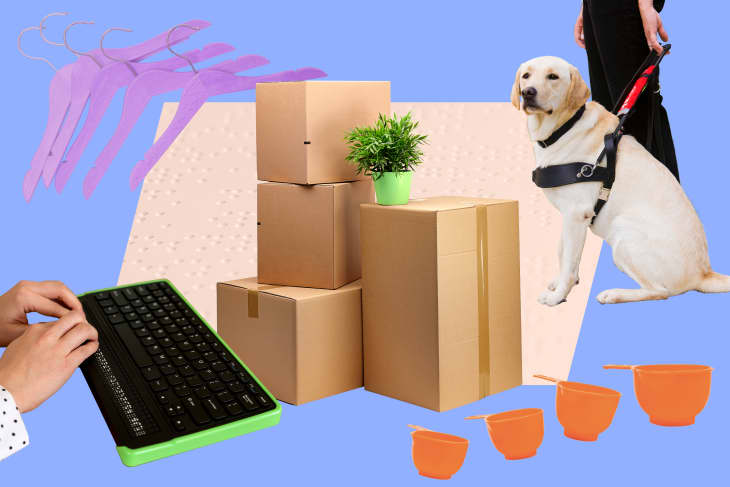5 Things I Always Do While Moving as a Totally Blind Person
Moving is stressful whether you live with a disability or not. People with disabilities, like myself, have to work out issues those who aren’t disabled wouldn’t worry about. As a totally blind person, I need to take special care in hiring movers. Do they have experience moving people with physical impairments or disabilities, for example? Do they have good reviews and references? I have to consider things someone with 20/20 vision might not need to.
There are tasks like painting, ordering and buying new furniture and decor, setting up internet service, and submitting a change-of-address form that have to be managed. Again, a disabled person needs to ensure everything is set up how they want. They need to stress how important this is to any delivery person or mover setting up their new home. It isn’t helpful if a company delivers a TV stand and leaves before putting it together and arranging it according to my instructions.
Thesesteps are importantto follow if you’re blind or have low vision and are planning a move. Thankfully, I didn’t have to complete my latest move on my own. While sighted folks don’t always need to hire someone to help them pack, my wonderful and strong younger brother and mom did the bulk of it. I did, however, make sure to learn the layout of my new place and how I wanted my space to feel. Here’s what I always do while moving as a totally blind person.
I know my rights as a renter.
Do you understand your rights under theFair Housing Act?If you have a service animal (even if pets aren’t allowed where you’re moving), your landlord can’t legally object to you having a dog. The bottom line: They can’t reject your renter application because you have a service animal.
I make a list of all my valuable personal effects.
Always know where your assistive technology like computers, braille displays, earbuds or headphones, and cell phones are while you move. You may be insured for these expensive items, but why add more work for yourself?
I have a plan for my space.
Since childhood, I’ve had to learn to quickly adapt to my surroundings. Before my mom and I moved into our new place, I visited a few times to get the lay of the land. Once I built a mental map of our space, moving day was a breeze.
我(非常)组织。
- Sighted folks label boxes after packing them. I have a braille labeler I can use when I need to.
- Our movers put boxes of kitchen-related tools in the kitchen. It seems like a small thing, but I need each box in its correct place to help manage unpacking.
- I love to cook. I have braille measuring spoons and cups. I put those where I know I can find them in the kitchen the next time I’m making dinner.
- I have raised dots I use as labels for microwave buttons or as guides for the oven.
- Spices, seasonings, and other pantry items go where we think they’ll work best. It’s the same for pots and pans. As I continue to get used to my new home, it’s been challenging to find what I need at times, but I’m a fast learner.
- It was my job to load the refrigerator. I put familiar goods where we always kept them. Others? I guessed.
I pack and unpack my own stuff.
- My vanity table might look like a mess, but I know what each bottle and tube is and where to find them.
- My closet and dresser are quite full. I’ve worn everything enough to know what pants/skirt/dress will go with which top/blouse/blazer. Most of my clothes are either blue or black. I know these colors will work with anything.
Although challenging, moving wasn’t so tough. We were prepared and organized, which helped make things run smoothly. Now that I’m getting settled, I can confidently say it’s going well.

